In one of our previous posts, we mentioned that we were going to rent a car for a couple of weeks and drive from the lake district in Northern Patagonia near San Carlos de Bariloche to the Cuyo region in Mendoza Province, Argentina’s wine country. We previously posted pictures of the drive through the Monkey Puzzle forests near Villa Puheania and the amazing lakes near San Martin de los Andes. Now we’d like to share some of the pictures we took on Route 40 after we left Patagonia and headed north to Mendoza. We took several days to drive up to Mendoza, spent a week there exploring wine country, and then made a marathon drive back to Bariloche so we could catch a flight to Tierra del Fuego, which is where we are now in Ushuaia. Coming back to Bariloche from Mendoza, we covered 15 hours of driving in 2 days on alternative routes (not Route 40), spending the night in the town of Neuquen to break up the drive.
Route 40 is basically Argentina’s Route 66. Most of it is paved, but some of it isn’t. Honestly, we drove on some pretty awful roads, both paved and unpaved on Route 40 and then RN 151 and RN22 coming back. The section north of the lake district is unpaved, we learned, because they have been planning, for uncountable years, to actually flood the mountain valley and create massive reservoir. The reservoir isn’t happening any time soon, but the roads aren’t going to be paved either, so they maintain the dirt section as well as they can.

I think we drove 80k on dirt roads to Mendoza. On the drive back, we discovered that some sections of the Route Nacional roads are maintained by contractors. Where they aren’t, there were big warning signs that maintained road was ending and that’s where we hit the potholes. If Ande wasn’t frantically trying to not get a flat tire and just get through, we would have taken some pictures of how awful some sections were. Rather than share bad road pictures, we’d like to share some of the beauty we encountered as we left Bariloche as the trees were starting to change and then came back to full color.
We survived the driving, were actually glad to take a break from flying regularly, and would like to share the following scenery.
Lakes After The Lakes
We left the lake district, but that wasn’t the end of the lakes. We saw many from Route 40 on our journey north. Here’s one spectacular picture we’re including even though we have no idea which lake this was along the way.
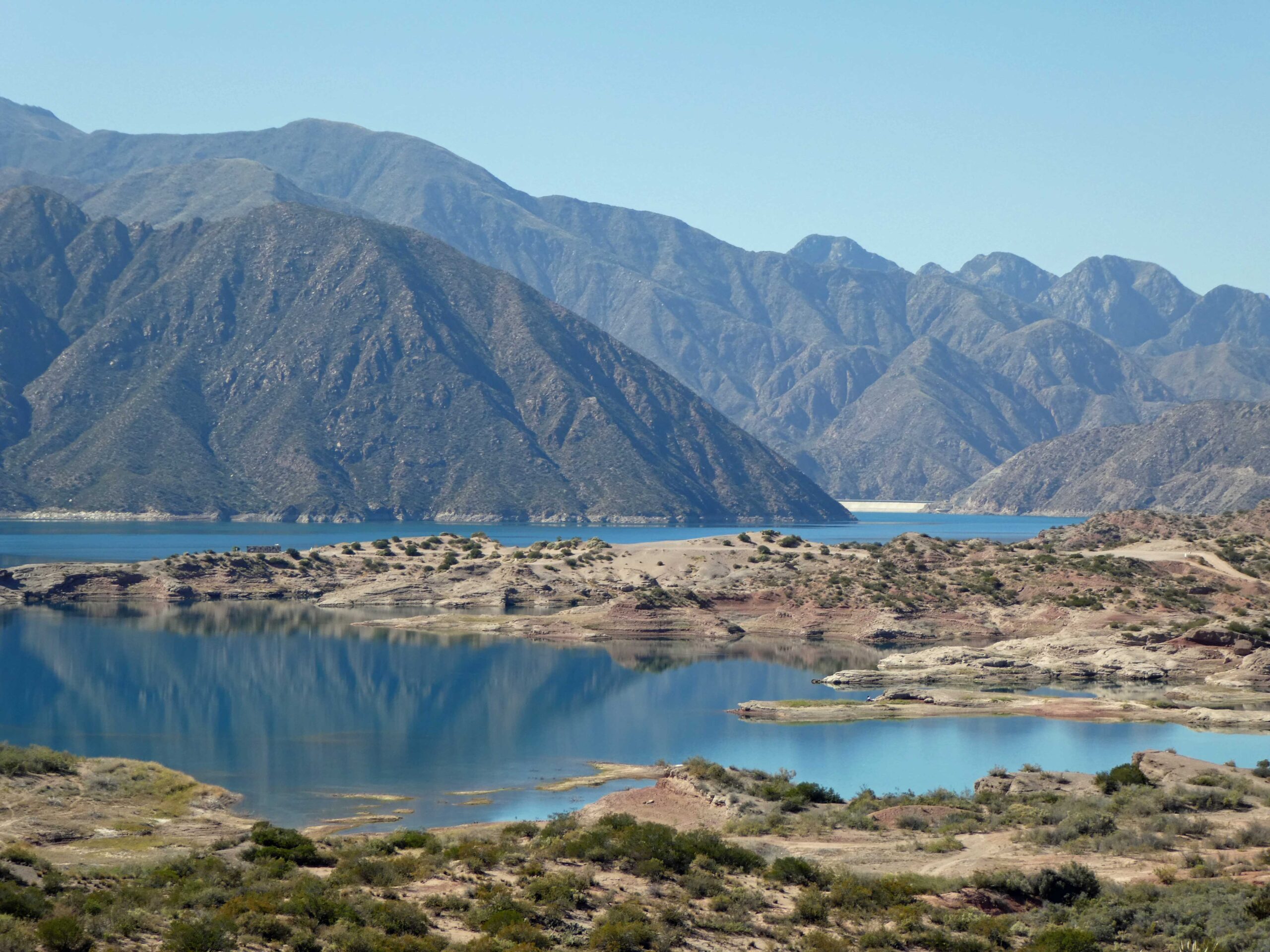
Further along the road north, we encountered a huge reservoir that was also obviously a popular summer vacation spot. We likened Embalse Ezequiel Ramos Mexia as the Lake Powel of Argentina. Here’s just a portion.
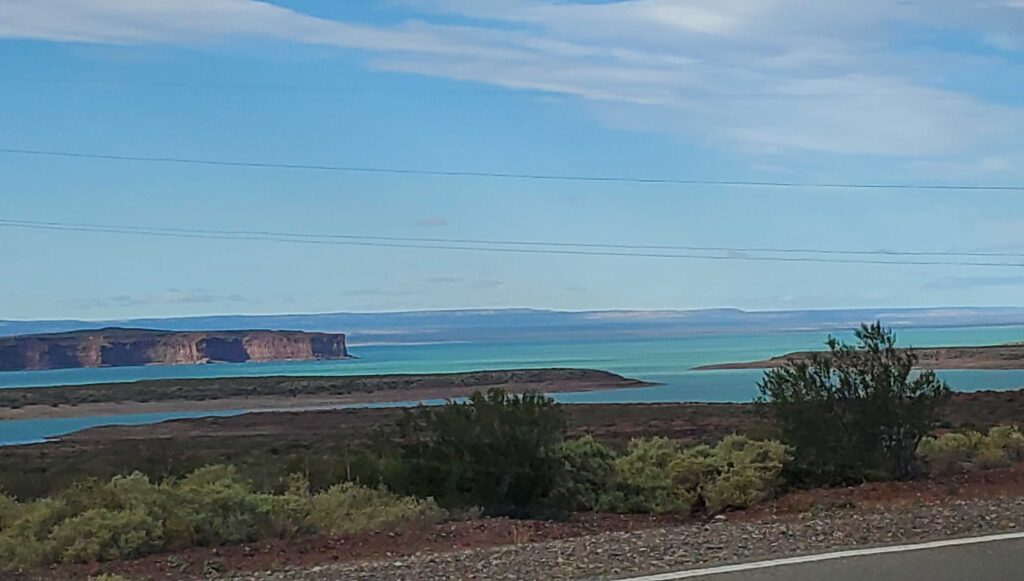
Of course, you can’t have lakes without the rivers that feed them, and much of our drive followed various rivers. We believe the picture below is part of Rio Grande along Route 40.
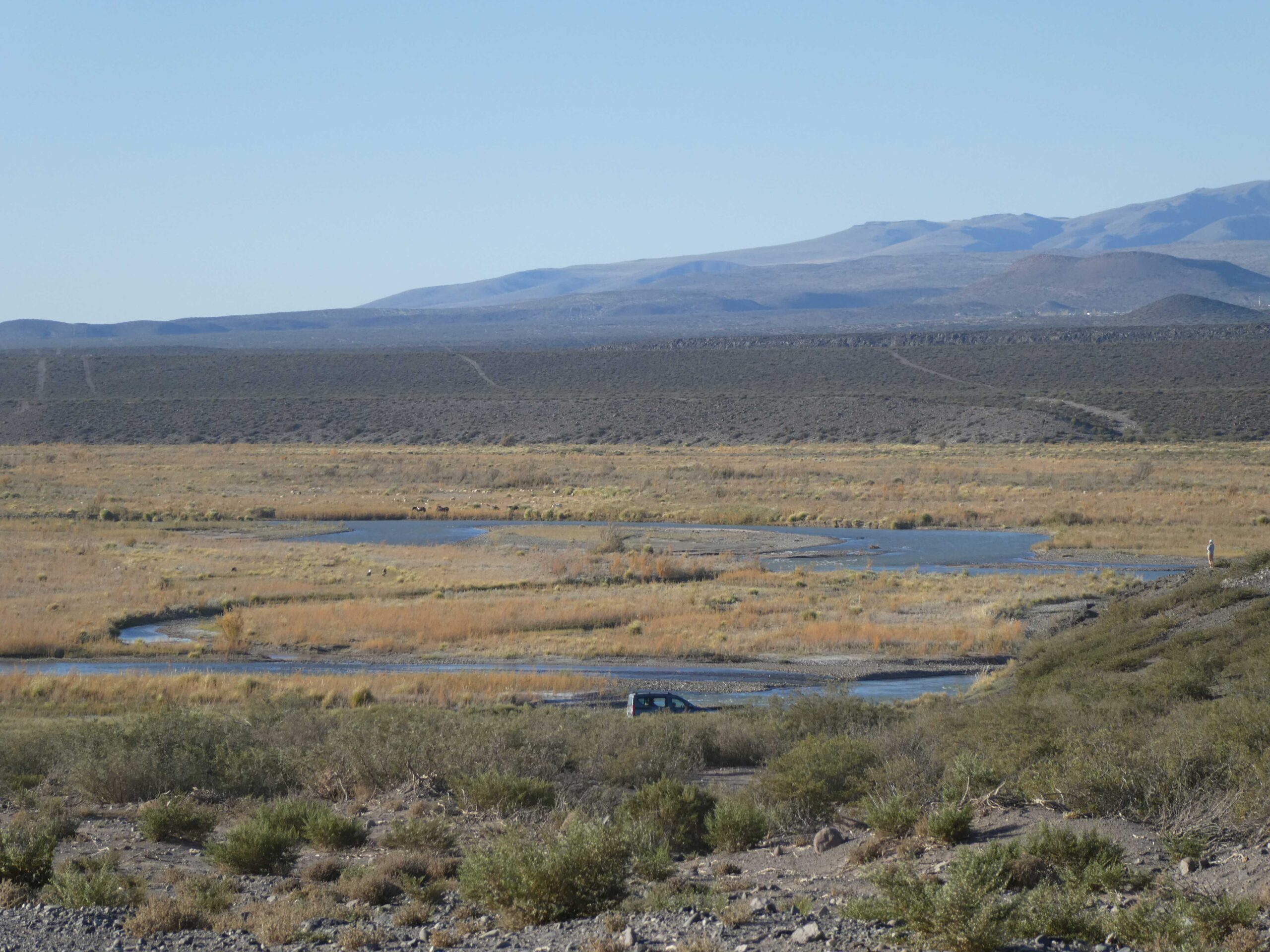
Peak to Peak to What?
While the water features along the route were certainly impressive, the mountains still stole the show. The peaks are unreal and layered with jagged, saw-like tops that are very unlike what we grew up with in the Rocky Mountains. There were also carved rock faces that reminded us of some of the cave dwellings we saw in Turkey and bluffs that rival anything that Utah and the Rocky Mountain West has to offer.
One of the more unique features we saw was this solitary peak rounded nicely at the top with a cap of jagged rock followed by a plain of smooth rock giving way to shrubs and a desert landscape. The layering of the different rock features was unlike anything we’ve ever seen.
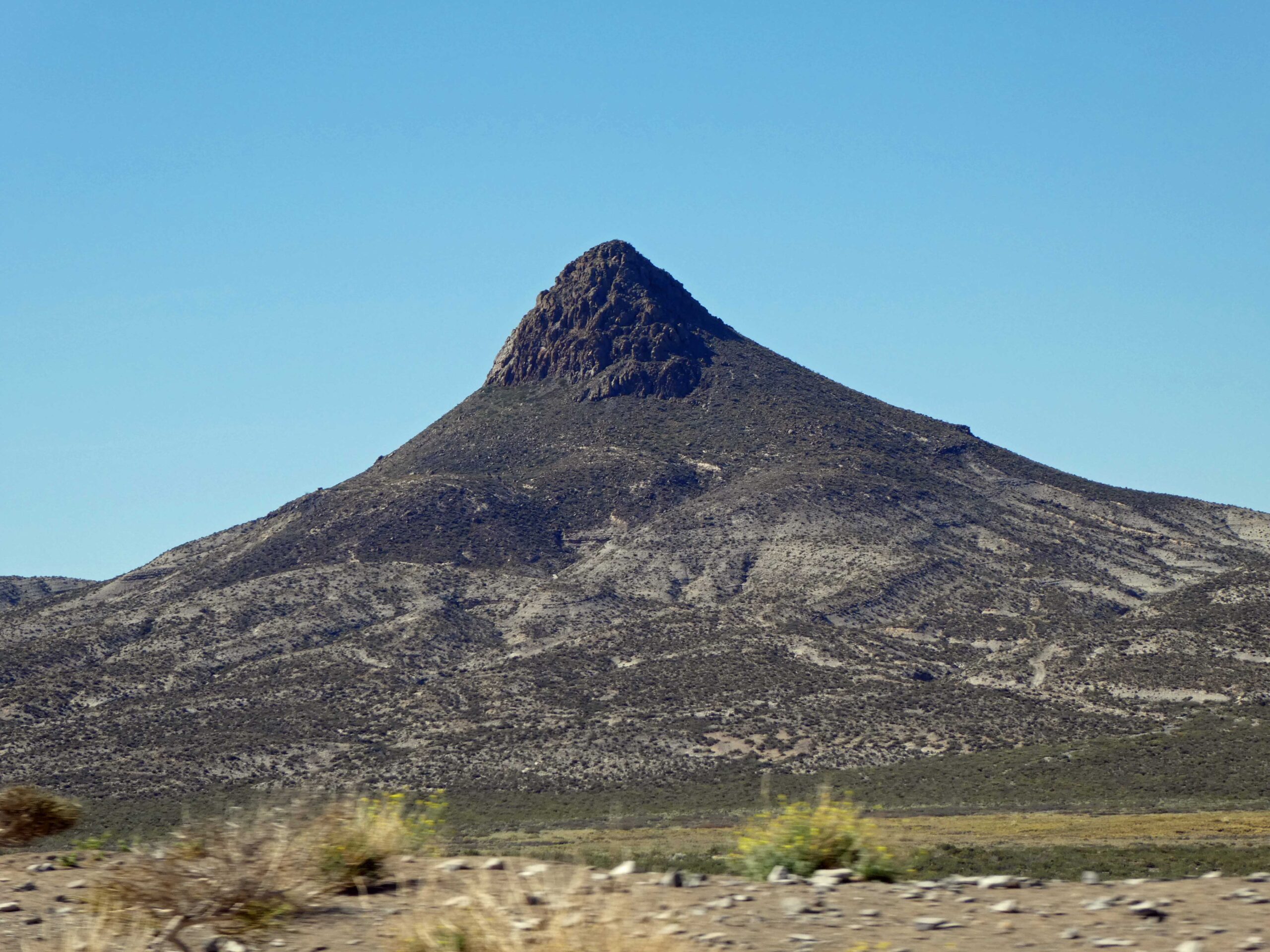
Mentioning the amazing rock features in Turkey, here’s one we saw that brought back those memories. What made this crazy unique is that the carved feature seems to be inserted into the hillside and is unlike any other rock features in the area. Features like this left us scratching our heads wondering how they could have possibly been created.Throughout the drive, Ande’s repeatedly said “I wish Dad was here” to give us an explanation like he did when we were kids. He was a geolgist and we generally thought these lectures were painfully boring on childhood roadtrips, but would love it now.
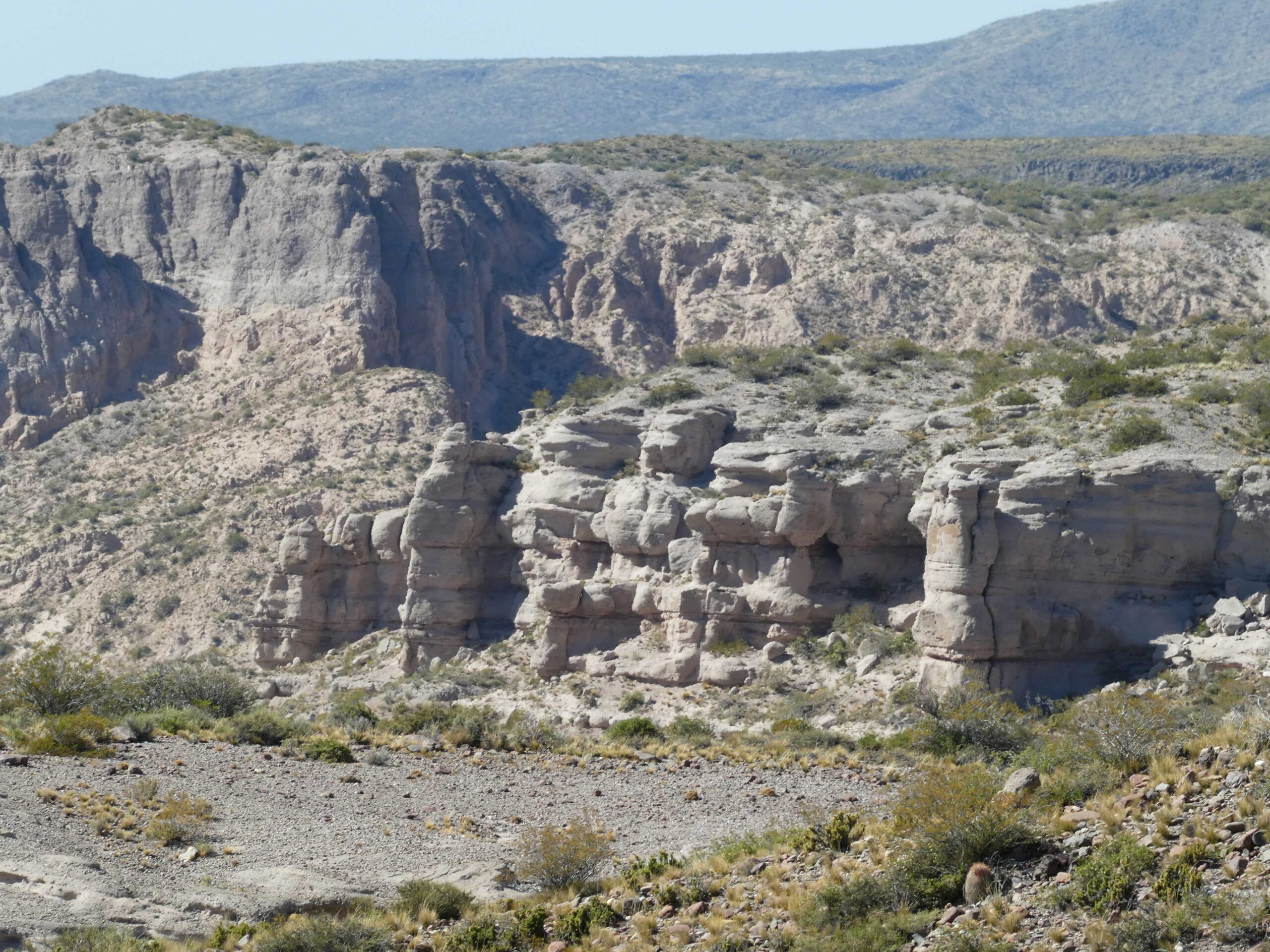
Here and there, we encountered cliffs that looked like they were inserted into the hillsides. The contrast of the cliff face and the green shrubbery in the surrounding landscape was capped with and unending vista of rolling hills behind.

When you start to get used to the landscape, the color and rock formations suddenly change and give you something completely new and unexpected like this pair of flowing orange rock formations.

And just so you don’t think the entire drive had a desert theme, we did pass through some high sections that revealed green valleys and remnants of the recent mountain snow.
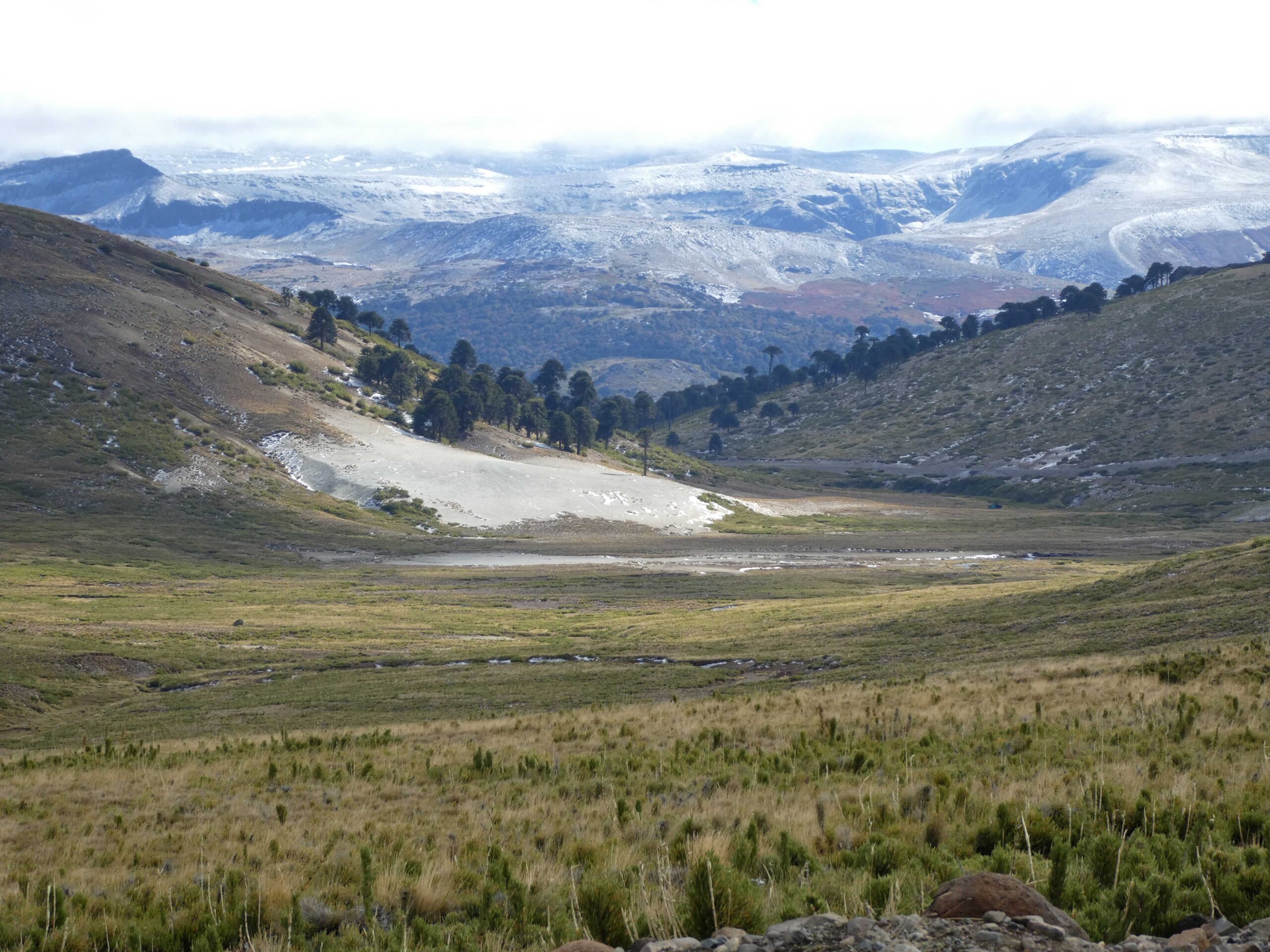
To top off the gallery of Route 40 peaks, we were also lucky to see the granddaddy of the Andes mountains on the approach to Mendoza, Aconcagua. To copy directly from Wikipedia, this monster is the highest mountain in the Americas, the highest outside Asia, and the highest in the Southern Hemisphere with a summit elevation of 6,961 metres (22,838 ft). During our first week in Buenos Aires, we met a climber from Oregon who was in Argentina for the sole purpose of climbing Aconcagua. Here’s the view we got from the road.

Return to Bariloche
After we left Mendoza and the Andes mountains, we headed across the plains out into straighter, faster, and much more boring landscapes. Think driving through Wyoming through Rock Springs on the way to the west coast. You just want to get through it. We started with a marathon 10 hour drive from Mendoza to the oil/dinosaur town of Neuquen. We HAD to drive 10 hours because there literally is no town of any size or any place to stay between Mendoza and Neuguen. The next day, we hit the road again and drove another 5 hours to return to Bariloche. The Bariloche area is amazing, and it gave us a spectacular return as the trees had completely changed color since we had left two weeks previously. Here’s some of the fall color we encountered along the way.
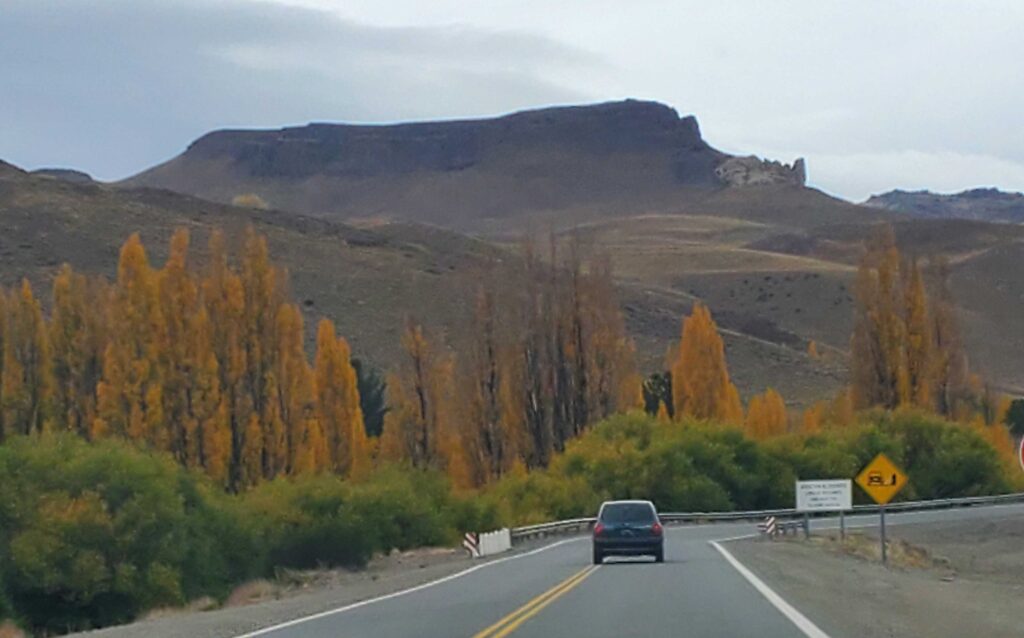
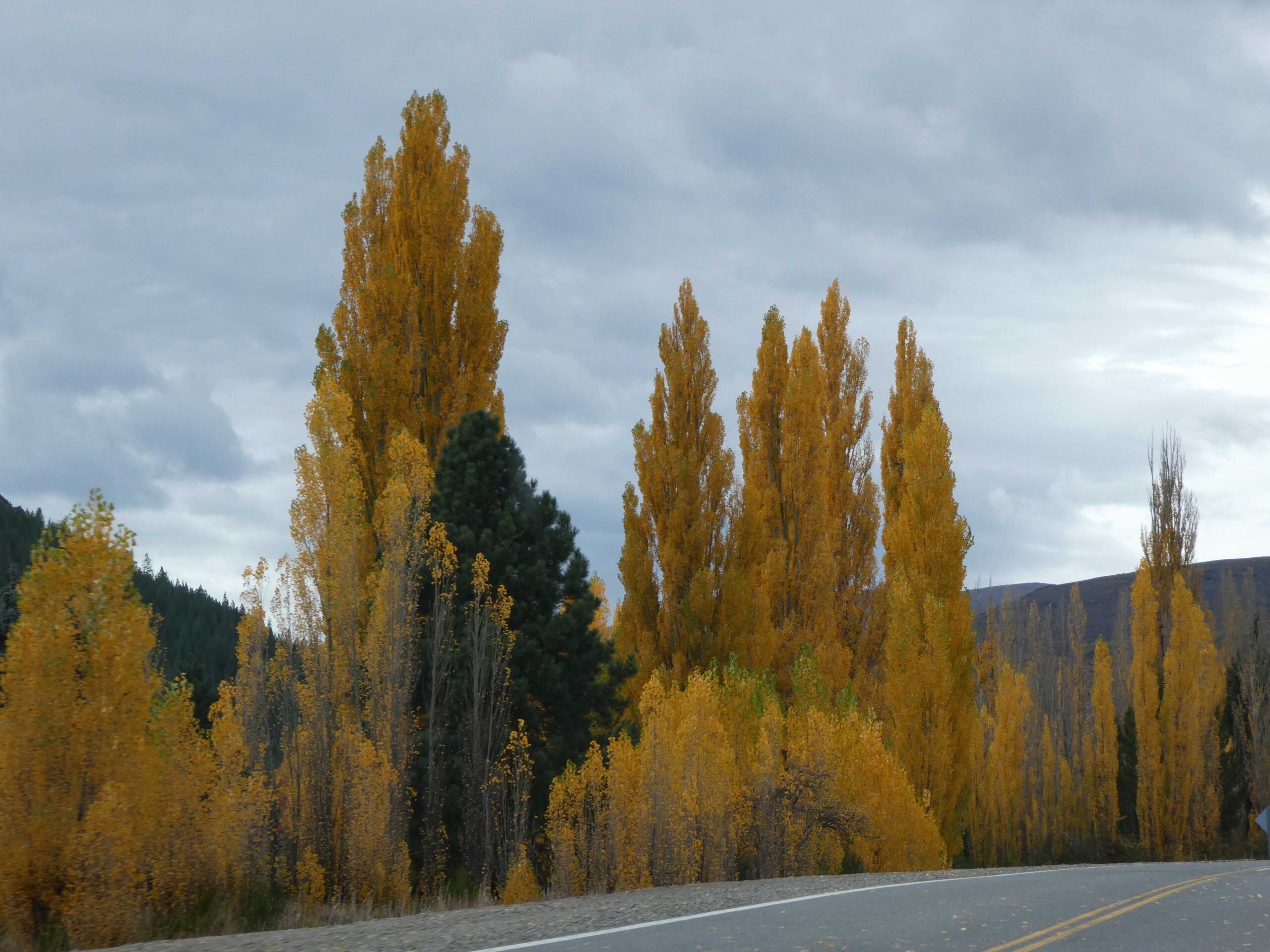
Of course, just to remind us that we were no longer in the Alta Andes, the peaks near Bariloche also greeted us with their jagged and irregular saw-blade tops.


It really was an amazing road trip. As mentioned before, we were getting a little tired of flying every week, so the road trip was a good change of pace. We’ll share our pictures of wine country and our day-trip drive through the Andes mountains outside Mendoza soon. We hope you enjoy the pictures of the amazingly varied landscapes we encountered as much we enjoyed taking them.
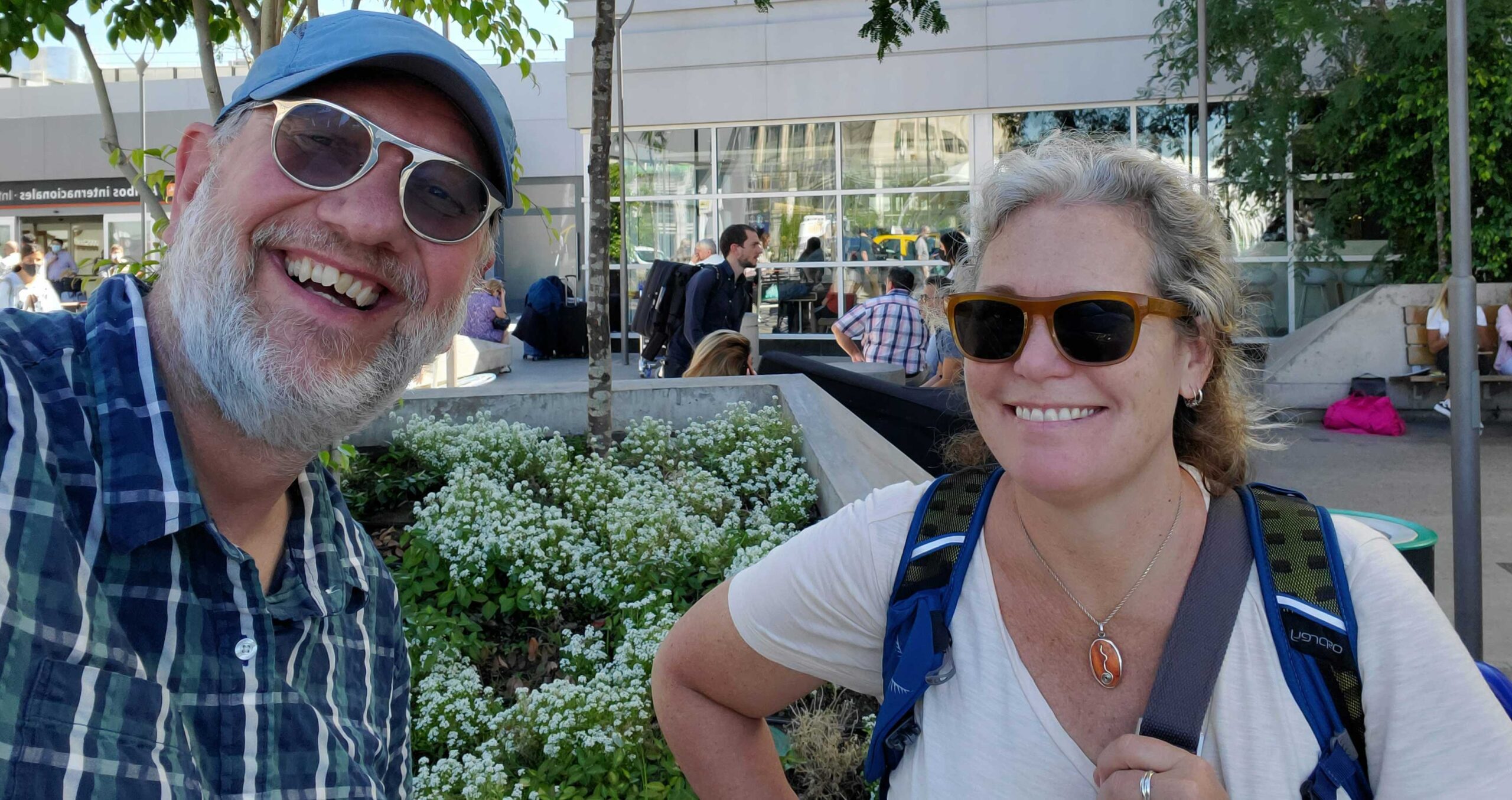
Still taking the trip with you. Enjoying it.
Thanks for traveling with us, mom!! We miss you and Frankie!
So amazing. I’m glad you avoided a flat!
Honestly can’t believe we did! There were dead tires and cars all along the way.